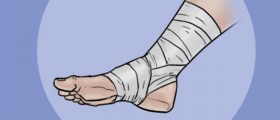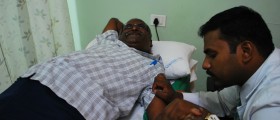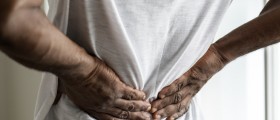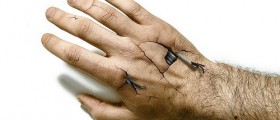
Tendons and tendonitis
Tendons are bands or cords of fibrous tissue that connect a muscle to a bone. A skeletal muscle is attached to one bone on one end and to another, neighboring bone on the other end. When the muscle is contracted, the angle at which the bones stand changes, and this is what causes that part of the skeleton to move. This is how we use our hands and legs or move our head, as the most obvious example. Tendons are very smooth and strong as they must handle the power of the muscle contraction, but with age, or by hard use, they may become worn and weak. If it becomes inflamed, that condition is referred to as tendonitis.
Inflammation of the tendon(s) is caused by overuse, injury or aging. In some cases, it is caused by rheumatoid arthritis or lupus. Tendonitis is common with persons who engage in high-impact sports and Achilles tendonitis, inflammation of the tendon which connects the calf muscle to the heel bone is the most common form of tendonitis in such people.
Symptoms and diagnosis
Pain and stiffness (worse at night or after exercise), or swelling and tenderness in the affected area. Diagnosis is made according to the activity history and physical signs, while MRI scan can show change or weakening of the tendon.
Treatment
Anti inflammatory drugs, rest, cooling, immobilizing and elevating the affected region/tendon. Temporary splint is also an option. Physical therapy or ultrasound are recommended for persons with high level of physical activity, and stretching and strengthening of the the muscles are beneficial as well. It is advisable to avoid any exercise that involves repetitive motion of the inflamed tendon. Surgery is taken as an option in repeated cases of chronic tendon inflammation.
In repeated cases of chronic tendonitis, surgery may be considered. Recommended surgical procedure will be selected depending on the location of the inflamed tendon, and may involve minimally invasive procedures and be done on an outpatient basis, or require a more elaborate open procedure. After the operation, an immobilizing device is used in the first couple of days, to allow soft tissues to heal. Physical therapy and exercise are gradually introduced, in order to return mobility and flexibility of the operated tendon.
When to opt for surgery
Nonoperative methods of treating tendonitis are always preferred, but if these do not offer a satisfactory result, or if a person is young and has an aggressive approach to sport activities, then surgery is recommended. On the other hand, elderly persons or those with low level of physical activity should opt for conservative treatment.

















Your thoughts on this
Loading...